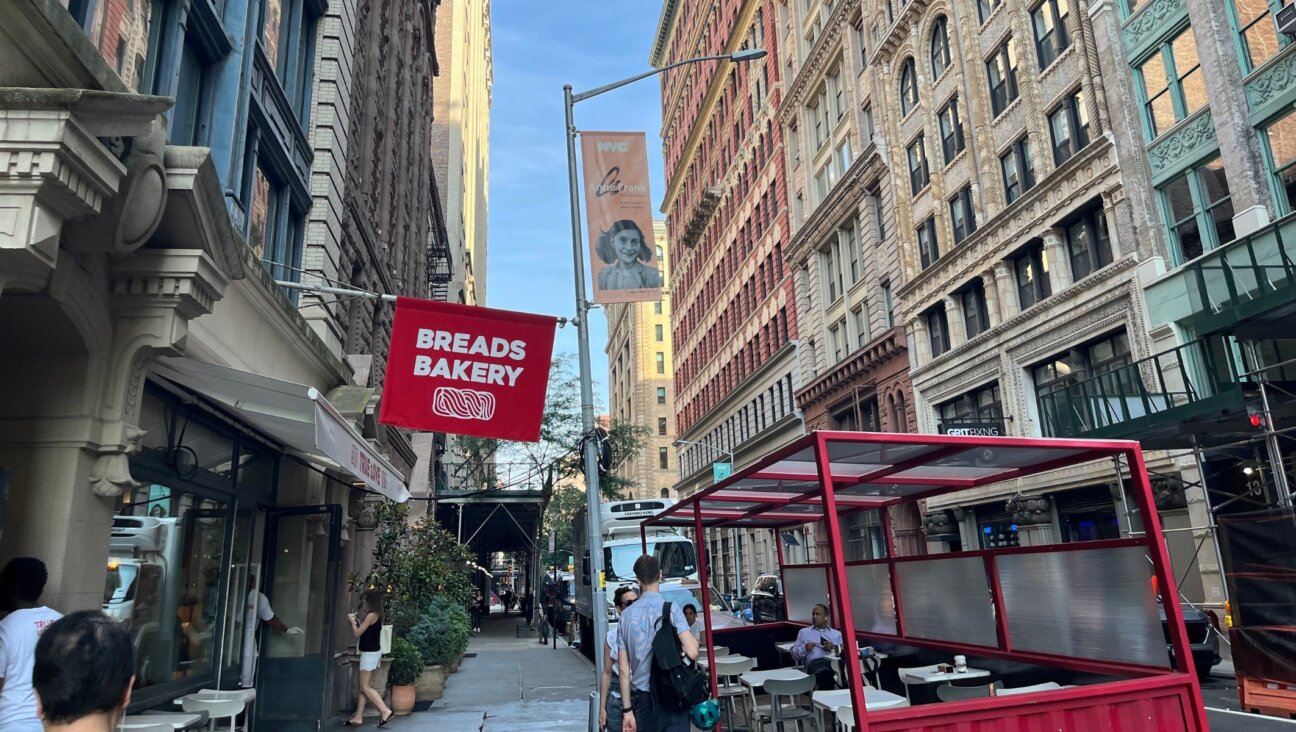One of Vilna’s Own Trains a Lens on the City
‘As a young girl I took it for granted I would go to university and be a professional, that I would be an artist and a doctor!” exclaimed septuagenarian Mira Jedwabnik Van Doren. Though she’s at an age when most start slowing down, the Vilna-born artist seems to be doing anything but: She has just released “The World Was Ours,” an hour-long documentary on the four centuries of vibrant Jewish life that existed in Vilna before the Holocaust.
The product of a privileged childhood in a city often called “the Jerusalem of Lithuania,” Van Doren was aware, even at a young age, “that this was an interesting and special place.” Indeed, her departure from it was not — as it was with others — a result of fleeing danger: She left in 1939 on a family trip to New York to see the World’s Fair.
“We didn’t even take a winter coat,” she said of the voyage, which unexpectedly turned into her family’s immigration to Manhattan. Since she left before Vilna was ransacked and the Jews were ghettoized, Van Doren felt a sense of guilt, as well as the burden to actively remember the people who weren’t as lucky, and the storied place she left behind. Over dinner in the late 1980s with fellow survivors from Vilna, she began thinking about producing “The World Was Ours.”
“The World Was Ours” chronicles 400 years of vibrant Jewish life and leads to the charmed era Van Doren had been able to experience. It offers viewers a picture of Vilna at its apex, its pre-war best, when culture reigned supreme and members of the Jewish community were involved with a variety of clubs and unions including sports, choirs, Zionism, the Bund and TOZ medical care for all Jews. In the film, the Vilna-educated writer Czeslaw Milosz describes how there was “no one Vilna, everyone belonged to a different Vilna.”
It was a challenge, not least because Van Doren’s profession — she is a painter — is a very different medium from film. “A film is a story, with a beginning, middle, and an end, and it has to move,” she noted. “A painting has no time element, and it’s not a collaborative experience.” Rather than creating a personal account, Van Doren wanted to take an anthropological approach to the film, and looked for articulate survivors who could recreate the life of the community on a larger basis instead of solely through familial and personal anecdotes, though the few stories that remain are some of the most memorable parts of the documentary.
But her training as an artist did influence the film. Van Doren studied art at the High School of Music and Art, in addition to Queens College, The Art Students League, and Columbia University, and she cited Georges Braque as a major artistic influence, particularly for his handling of space and his use of colors that elicit a “subtle, electric energy.” But was a painting by one of Braque’s peers, Pablo Picasso’s Guernica, that Van Doren saw as a goal for her documentary. “There is no color, yet you can hear them wailing,” she says, referring to the figures depicted in Picasso’s horrifying black and white Spanish Civil War painting. “Picasso was able to make you hear the agony by his shapes.” Van Doren continued, “I’m not a filmmaker so this was my inspiration.”
The film premiered at Brandeis last spring, and has screened at various festivals as well as a major recent showing at YIVO, a Jewish and Eastern-European research institute and another product of Jewish Vilna that has been transplanted to New York.
Van Doren is currently in the process of working on a companion book of photography to the film with her husband John Van Doren, a writer and professor, to whom she has been married for 51 years. Eventually, she would like to see “The World Was Ours” broadcast on public television to reach a wider audience. She is also interested in publishing a series of videos with the interviews she had to cut for lack of space — especially since the average age of survivors is increasing, and memories will soon be forgotten. “I was humbled by a lot,” she said of the process, but especially “by the goals and the seriousness of the community.”
Caroline Lagnado is a writer in New York.
















